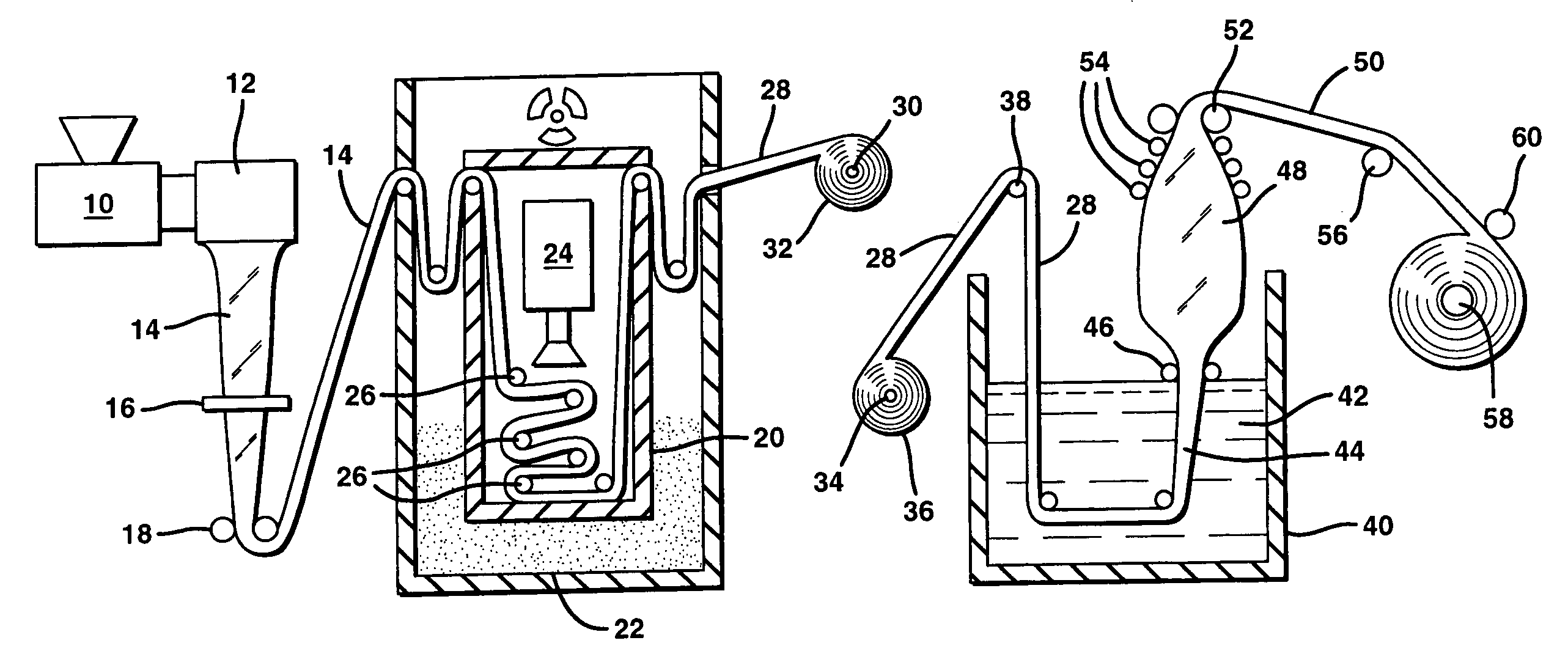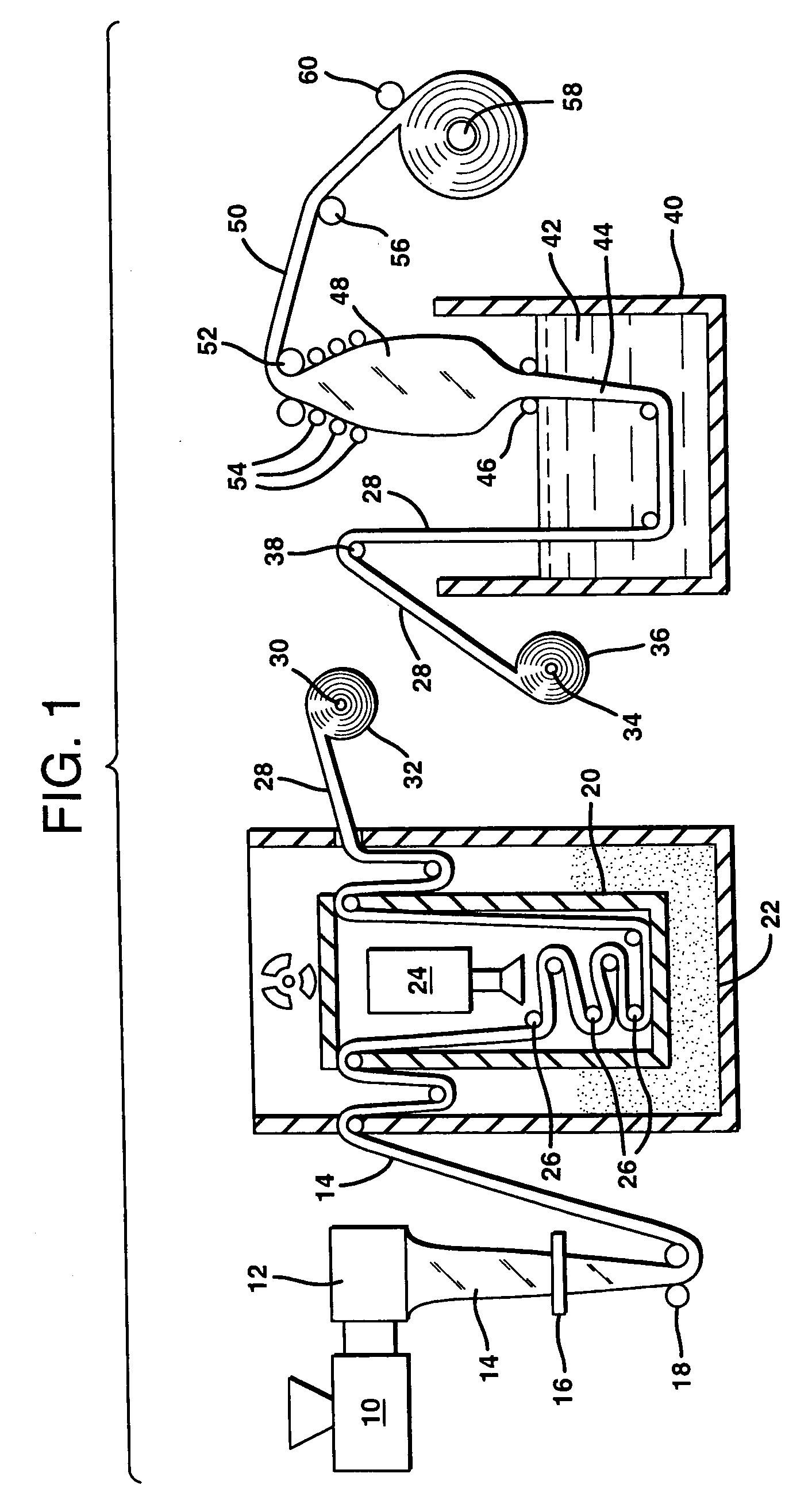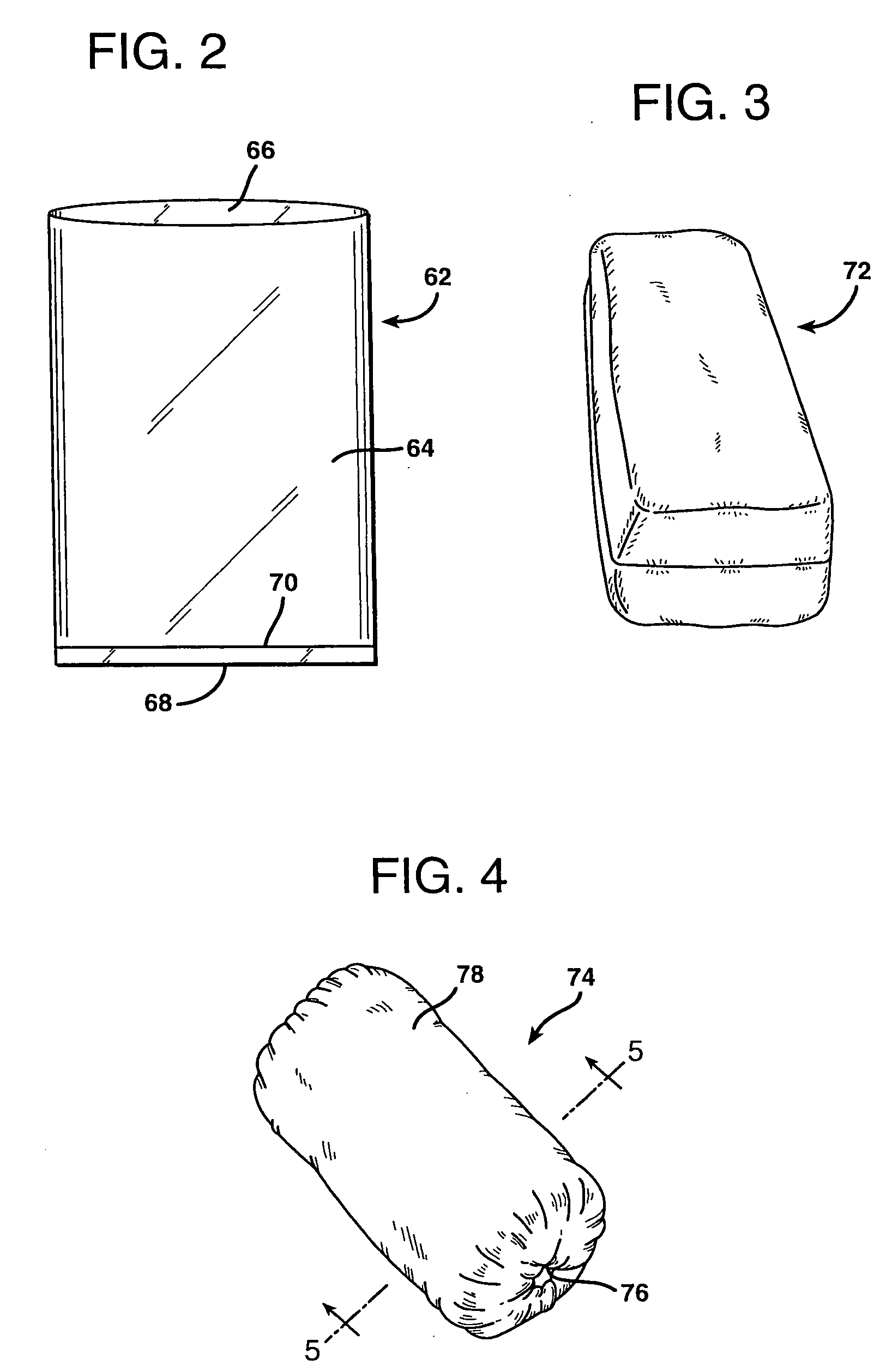Additive delivery laminate and packaging article comprising same
a technology of additive delivery and thermoplastic laminate, which is applied in the field of packaging, can solve the problems of inability to transfer enough inability to distribute food additive in or on the food product, and insufficient adhesion of food additive to the food produ
- Summary
- Abstract
- Description
- Claims
- Application Information
AI Technical Summary
Problems solved by technology
Method used
Image
Examples
examples 1-5
Preparation of Five Additive Transfer Laminates
[0094] A portion of Exxon Vistanex™ MM grade L-120 polyisobutylene (PIB) was removed from a bale and cut into small pellet-sized pieces. The MM grades of PIB rubber could be easily cut with a rubber bale cutter or even a band saw. It could also be shredded by powerful machinery suitable for rubber, such as a Mitts & Merrill Wood Hog or a Cumberland Plastics Granulator. A 10 weight percent solution of the PIB rubber and 0.1 wt. % Foral® AX hydrogenated rosin was prepared with 50 grams of the cut up rubber placed in a sealed glass jar with 450 grams of Isopar™ C (a petroleum fraction containing various hydrocarbons, but primarily composed of isooctane). The mixture was heated (to approximately 75° C.) and agitated until the butyl rubber and hydrogenated rosin was fully dissolved in the Isopar™ C organic solvent. The amount of rubber in solution could be varied from less than 10 wt. % to more than 25 wt. % in preparing an additive deliver...
examples 6-20
[0100] A variety of coating formulations were prepared and thereafter applied to Substrate Film No. 1, described above, to make an additive delivery laminate. The additive delivery laminate was converted to a packaging article by being heat sealed to itself to form a casing, which was then used to package a food product. The food product was then cooked while packaged in the additive delivery laminate. During cooking, one or more additives from the additive delivery layer transferred to the food product, imparting desired color, flavor, and / or fragrance to the food product.
[0101] More particularly, the coating formulations were prepared by combining organic solvent, water-insoluble thermoplastic polymer (i.e. polyisobutylene, which is a rubber), a polymer toughening agent (i.e., hydrogenated pine rosin, which is a tackifier) and one or more granular additive agents. In general, about a 1:4 mixture (weight basis) of granular flavor, color, and / or odorant agent(s) to polymer solution...
examples 21-40
[0106] Table 6, below, provides cook-in results for Examples 21-40, in which various coating formulations were prepared and applied to Substrate No. 1 in a manner corresponding to the manner set forth in Examples 6-20. However, the formulations of Examples 21-40 differed by varying the composition of the polymer toughening agent as well as by inclusion of calcium oxide (i.e., a co-toughening agent and / or release agent) in some of the formulations. The resulting additive transfer laminates were converted to casings and used to package turkey emulsion, with the packaged products being subjected to cook-in as in Examples 6-20.
[0107] In general, it was observed that the polymeric toughening agents improved the cohesive strength of the polyisobutylene binder, and reduced the pick-offlegs from the polyisobutylene upon / during removal of the casing from the cooked turkey product after cook-in. Materials such as Staybelite A and rosin esters including Foral® AX, DX, NC and Endere® S served ...
PUM
| Property | Measurement | Unit |
|---|---|---|
| particle size | aaaaa | aaaaa |
| shrink | aaaaa | aaaaa |
| temperature | aaaaa | aaaaa |
Abstract
Description
Claims
Application Information
 Login to View More
Login to View More - R&D
- Intellectual Property
- Life Sciences
- Materials
- Tech Scout
- Unparalleled Data Quality
- Higher Quality Content
- 60% Fewer Hallucinations
Browse by: Latest US Patents, China's latest patents, Technical Efficacy Thesaurus, Application Domain, Technology Topic, Popular Technical Reports.
© 2025 PatSnap. All rights reserved.Legal|Privacy policy|Modern Slavery Act Transparency Statement|Sitemap|About US| Contact US: help@patsnap.com



